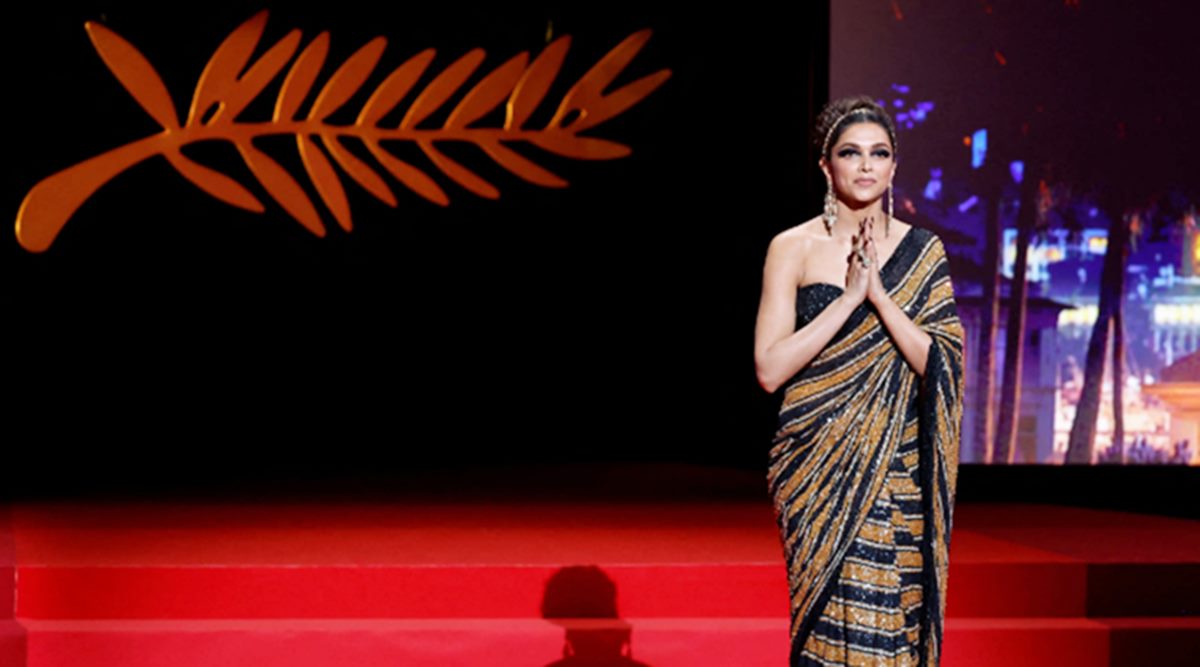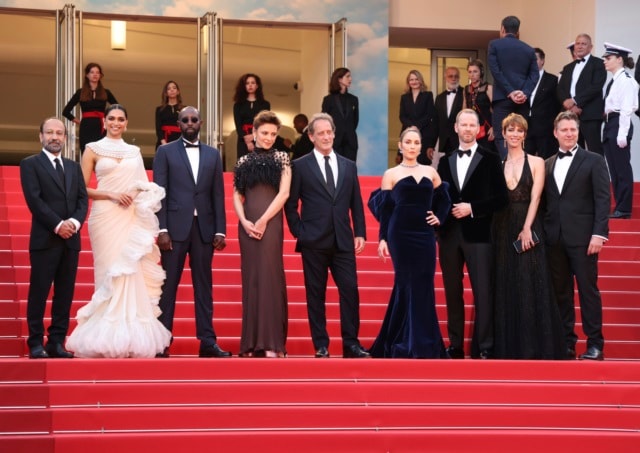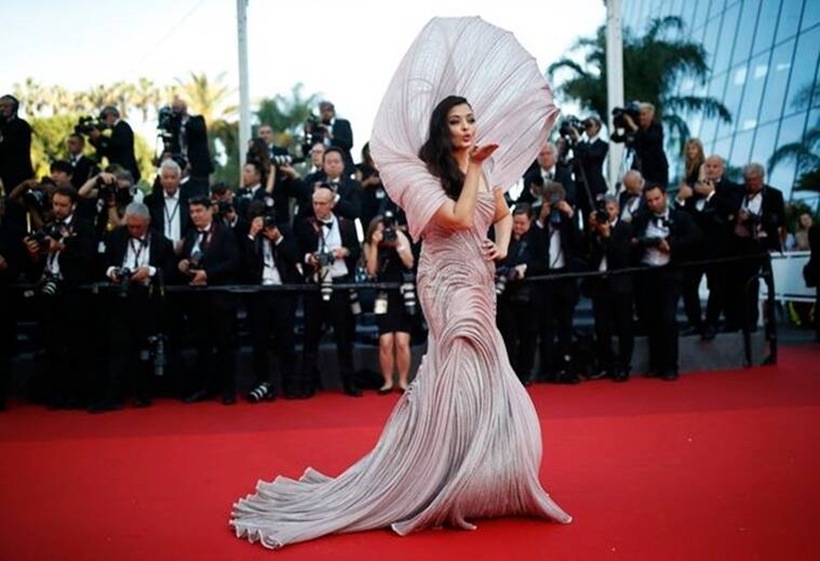June 2, 2022 7:07:10 pm
 Cannes 2022: There has been an uproar over Indian films shown at Cannes this year. (Photo: AP)
Cannes 2022: There has been an uproar over Indian films shown at Cannes this year. (Photo: AP)Written by Sujatha Narayanan
The month of May this year saw the most colourful turnaround in the world of entertainment since the coronavirus pandemic brought us to our knees. On the Cannes red carpet, a plethora of Indian celebrities sashayed down. The most known face is that of Deepika Padukone who held the fashion flag highest. Her appearances have been an unprecedented display of beauty and of course, her competent team accelerated her glam quotient on Instagram.
But the Cannes Film Festival is not just about the red carpet. Movie screenings are the main story and there has been an uproar over Indian films shown at Cannes this year, with enough views on which of them qualified to be screened and in which category. As India is a “partner country”, this year saw a number of our movie stars, especially from the South, grace the Cannes red carpet. It was like Cannes had become a “holiday destination” of sorts for the famous names from the film, television and digital entertainment sectors who just “happened to” spend their summer in the resort town on the French Riviera.
The Cannes Film Festival is primarily a movie lover’s sojourn. Secondly, it is (like other film festivals) many things at once—it is a celebration of the movies and a competition held in high regard. It is a film premiering venue as well as a film market. In its 75th year, we saw stars who trooped in to participate in this fashion and film spectacle. But 15 years ago, Cannes was not just a spectacle, films came first and fashion came a far second.
Best of Express Premium
Unlike the sample attendance of film stars today who thronged the festival, 15 years ago there was a serious South representation in this seaside town. It was perhaps not privy to this kind of star count but it did have two of the biggest names of Indian cinema hailing from the South, who were officially invited to represent our country. 2007 was the year when India was one of the countries which could showcase its films for two exclusive days at Cannes under the Tous Le Cinema du Monde (Cinema of the World) category and there was a jury from India that selected these films to be screened. The two Indian film directors who saw their share of the spotlight at the India Pavilion were Mani Ratnam and Shankar.
 Jury President Vincent Lindon, centre, poses with jury members Asghar Farhadi, from left, Deepika Padukone, Ladj Ly, Jasmine Trinca, Noomi Rapace, Joachim Trier, Rebecca Hall, and Jeff Nichols. (Photo by Vianney Le Caer/Invision/AP)
Jury President Vincent Lindon, centre, poses with jury members Asghar Farhadi, from left, Deepika Padukone, Ladj Ly, Jasmine Trinca, Noomi Rapace, Joachim Trier, Rebecca Hall, and Jeff Nichols. (Photo by Vianney Le Caer/Invision/AP) It was the summer of 2007 and I had just got a new job with actor Prakash Raj’s film company Duet Movies. Being an Executive Producer meant one has to do many things all at once as well. One of them was learning to take a Tamil film Mozhi (Language) to Cannes. Prakash Raj was an enterprising producer and at Cannes that year, Mozhi was screened at the market screening (which was a proud moment for an independent producer like him) and the whole two weeks taught me to view Cannes as a place which leveled the playing fields amongst film talents. India’s best and diverse film industries have had a plethora of films to bring to a “film island” like Cannes but one had to work proactively towards it. Producers and selection committees alike have to see a synergy and dive right into such opportunities. Because Cannes is not just about the “art house award winning films”. It is also a film market where a producer can sell a slate of films (old and new) to a buyer from another country. Acting and technical talents can meet prospective talent agents from other film industries from across the globe. Cannes works like an “exchange program” of sorts where the real deals between different production companies happen in the quiet stalls in the basement of the main theatre building, which will be abuzz with activity like any other product exhibition, far away from the shutterbugs on the red carpet!
The focus on the red carpet was there earlier as well but perhaps with lesser noise.
Aishwarya Rai’s presence at Cannes year after year did make India look prominent as a country of high value entertainment. The India Pavilion is a place where Indian delegates and registered film fraternity members could “hang out”. In 2007, the Pickle magazine had an exclusive coverage of Nayagan and Kamal Haasan had a pride of place even there! In 1999, the South saw a Malayalam film screened in the ‘Un certain regard” section starring a mainstream movie actor Mohanlal, who was also the producer of that film. Vaanaprastham premiered at Cannes on May 21, 1999, and that was perhaps when the South woke up to a festival like this. In 2007, the whole Cannes scenario was still all new – the Confederation of Indian Industries (CII) and their helpful personnel didn’t see any divide between Hindi films and regional ones. There was no “us” and “them” at the India Pavilion and films from South Asia was met with as much aplomb as the West.
 Aishwarya dazzles on the red carpet in this Gaurav Gupta Couture gown. (Source: Reuters)
Aishwarya dazzles on the red carpet in this Gaurav Gupta Couture gown. (Source: Reuters) Martin Scorsese made his red carpet appearance that year for the opening night where Wong Kar Wai’s Blueberry Nights was screened. Contrary to what people may think, tickets can be bought for such events and film premiers are not just meant for the VIPs in elaborate gowns and bow ties. Cinema is the point of unity at Cannes and the beauty of walking through the passageways of Palais de Festivals (the main theatre building) will take you to one screen after another with small food stalls on the side and names of films (all filmmakers and production banners are treated alike) will spring up at you as you buy your popcorn!
Today, Cannes is a more “accessible and in” festival and governments across the world go out of their way to take delegates to this picturesque town.
Cutting back to an evening in 2007, Mani Ratnam and Shankar were taking it all in with equipoise at the India Party on the French shore. It was indeed a phenomenal experience to see the response the two films received at the screenings. Shankar’s production Veyil, written and directed by Vasanthabalan, with the lead actor Pasupathy (who is now a more familiar name with his latest role as Rangan Vaathiyaar in Pa Ranjith’s Sarpatta Parambarai) and Mani Ratnam’s Abhishek Bachchan and Aishwarya Rai starrer Guru were showing on parallel screens. The Veyil screening ended with a thunderous applause and foreign media and film buffs alike thronged to meet Vasanthabalan and Pasupathy—who had a German woman come up to him, teary-eyed to shake his hand and say “bravo”. Director Shankar was beset with questions on how he had selected this story and produced a film which touched anyone who saw it. The power of cinema as a medium that transcended language was there for all to see. Across the corridor, Ratnam’s Guru was met with a standing ovation. The mikes and flashbulbs were on the filmmakers. It was a shining moment for India as Munna Bhai MBBS and Rajkumar Hirani were being celebrated on another screen nearby. The applause around the India Pavilion that day took a while to fade out.
View this post on Instagram
It wasn’t the era of social media and hence the spotlight on every single appearance and movie being screened wasn’t as “in your face” as it is today but as an avid film lover, the pure joy in jumping theaters to watch myriad movies made my Cannes experience memorable beyond just networking for the Mozhi screening. For those who work tirelessly behind the scenes in filmmaking, especially the producers and distributors, the bigger picture lies in festivals and marketing arenas like Cannes, where one gets to watch/screen a film and perhaps even purchase/sell the remake rights then and there!
In a recent interview with Anupama Chopra, Deepika Padukone said how Indian filmmakers, producers, and actors are doing everything right and how the selection of our films for these festivals has to become more robust. She is on the mark with this one. Someone sitting on a committee or jury has the power to give space for our various filmmaking voices to be heard.
In 1994, Shaji Karun’s Swaham was the only Indian film nominated for this highest award at Cannes in the Best Film category. Shaji Karun is also the filmmaker and cinematographer who has won a Special Mention Caméra d’Or for his film Piravi in 1989. Before that, it was films like Do Bigha Zameen and names like Satyajit Ray who would be associated with this (or any) festival.
While this year for India at Cannes saw a rather relaxed Kamal Haasan who had gone there to launch the trailer of his upcoming film Vikram (and his NFT venture for the film), the desire is to see an actor-director-producer like him lead an array of film talents from the country into the annals of official premieres and screenings in a festival like Cannes. Pa Ranjith, Parthiban, Ravi K Chandran and Madhavan also made their appearances along with Pooja Hegde, Tammannah and others but the impact will be louder if a delegation of talents go with films that have the potential to win the coveted Palme d’Or someday.
The doors of Cannes and its categories are more open to India now than ever before. Our selection committees in India should wake up and empower our fiercer and diverse filmmakers to walk through that door. Anurag Kashyap’s Gangs of Wasseypur made a Cannes headline in 2012. We have had our share of stars grace the jury and the red carpet. At a time when regional cinema is towering over Hindi, It’s about time our films went in to win.
- The Indian Express website has been rated GREEN for its credibility and trustworthiness by Newsguard, a global service that rates news sources for their journalistic standards.

